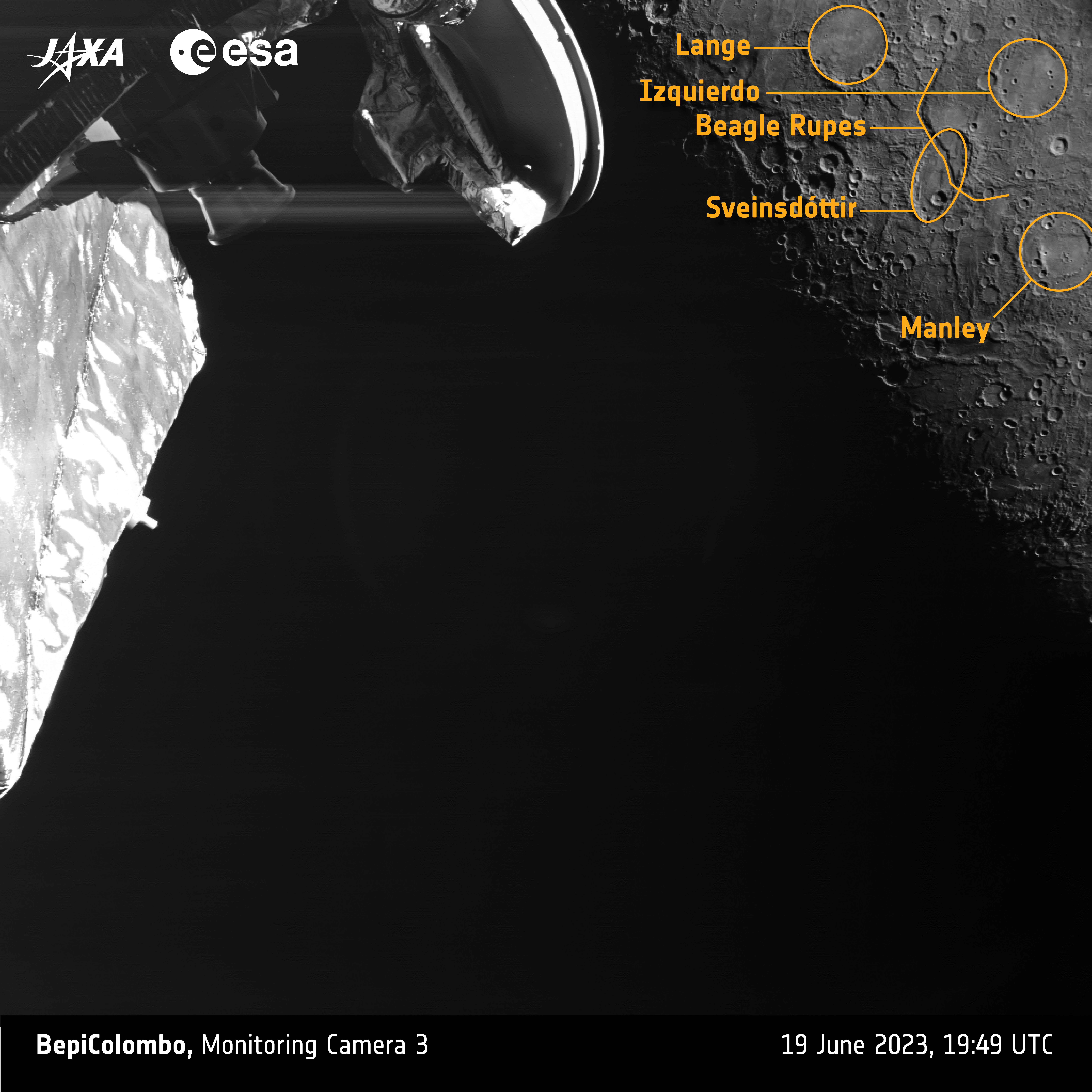The BepiColombo mission has completed its third flyby of Mercury, with three more waiting to happen in the next couple of years. This one was the closest flyby yet, with the spacecraft flying just 236 kilometers (147 miles) from the surface of the smallest planet in the Solar System. The mission is a collaboration between ESA, the European Space Agency, and JAXA, their Japanese counterpart.

The three early-release images.
“Everything went very smoothly with the flyby and images from the monitoring cameras taken during the close approach phase of the flyby have been transmitted to the ground,” said Ignacio Clerigo, ESA’s BepiColombo Spacecraft Operations Manager, in a statement.
Tens of images were taken by the spacecraft and the team picked three to showcase in an “early release”. They are some of our best views of Mercury ever and give us a great look at the newly named Edna Manley crater, after the important Jamaican artist. All craters on the planet are conventionally named after artists, musicians, painters, and authors.
“During our image planning for the flyby we realised this large crater would be in view, but it didn’t yet have a name,” explains David Rothery, Professor of Planetary Geosciences at the UK’s Open University and a member of the BepiColombo MCAM imaging team.
“It will clearly be of interest for BepiColombo scientists in the future because it has excavated dark ‘low reflectance material’ that may be remnants of Mercury’s early carbon-rich crust. In addition, the basin floor within its interior has been flooded by smooth lava, demonstrative of Mercury’s prolonged history of volcanic activity.”

The spacecraft with some of the features visible just near the terminator – the line between day and night.
The composition of the dark material within the Manley crater will be analyzed by BepiColombo and hopefully provide intriguing insights into what kind of minerals are present in it, especially carbon. This work will open a new window in the study of Mercury’s geological history.
The next flyby is planned for September 2024, with the following flybys happening just a few months later, before orbital insertion in December 2025.
It might seem peculiar that the spacecraft is going on such a convoluted path to get in orbit around Mercury. After all, it was there just yesterday. The problem is speed. You want a spacecraft coming in at the right speed, so you need to brake in some way. In space, without air, you can either pack a lot of fuel and use retrorockets, or steal energy from planets in flybys to slow down.
The mission is using a trajectory devised by Italian engineer Giuseppe “Bepi” Colombo to get to Mercury and it is using electric propulsion to slow down further. These rockets do not provide the thrust that chemical rockets have, but by being slow and steady – they can go on for weeks and even months – they can achieve significant decelerations. The next thruster arc will take place this summer.
“We are already working intensively on preparing for this long thruster arc, increasing communications and commanding opportunities between the spacecraft and ground stations, to ensure a fast turnaround between thruster outages during each sequence,” says Santa Martinez Sanmartin, ESA’s BepiColombo mission manager.
“This will become more critical as we enter the final stage of the cruise phase because the frequency and duration of the thrust arcs will increase significantly – it will be almost continuous during 2025 – and it is essential to keep on course as accurately as possible.”
Once in orbit of Mercury, BepiColombo will split in two: the ESA-led Mercury Planetary Orbiter and the JAXA-led Mercury Magnetospheric Orbiter.
Source Link: BepiColombo Snaps New Images Of Mercury In Closest Flyby Yet